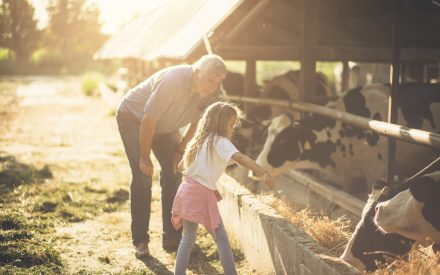
Calculating family living needs is an important part of a financial checkup. Putting pen to paper regarding your actual expenses over the past couple of months, can be eye opening for anyone!
Family living expenses, or more accurately, owner withdrawal, can be a major draw on farm income. Family living expenses for farm families are not much different than non-farm family living expenses.
If you are not already tracking your owner withdrawal through a recording keeping system, such as QuickBooks or Quicken, one simple method for calculating family living expenditures is to review your checkbook for the past couple of months (an entire year is even better!) and add up expenses you would incur whether you were on the farm or not.
Factsheets
The UW-Extension Family Living Programs provides tools to allow you to make future financial decisions based on accurate and complete information. Putting together and following a spending plan can be overwhelming, but following these steps will let you create a plan for your personal finances going forward. Here is a Monthly and Annual Household Spending Plan worksheet that can help with the various common categories of family living costs, and additional budget and planning tools. Don’t forget about the portion of credit card payments that are paying for family living costs. Find more information on Calculating Family Living Expenses.Farm Future – Where Do You Want To Be?
How do you define the future of the farm, and how well can you articulate this to others in your family, and/or business? You may find that others involved with the business may or may not share the same ideas for the future of the business. There are resources to help you articulate your vision for the future and communicate that vision with those involved with the business and/or family.
A Few Questions May Help Get The Discussion Started:
- What are some ideas you are considering for your farm?
- What are your plans or goals for the near future? What are more long term goals?
- Who else have you shared your plans with? Have you shared your plans with family members? Have you shared your plans with business partners?
- What are the strengths of the business? What are the weaknesses?
Develop Your Vision For The Farm & For Your Future
Before the farm begins to consider specific scenarios for the future of the business and family, it is important to articulate your values, vision, mission, and goals. The development of a meaningful vision is not easy or instantaneous. It takes time, thought, effort, and teamwork. Once you have thought through the following steps, share your vision with the members involved in your farm business. The farm vision will need their input as well, if they are to be involved in the future of the business.
No one person on the farm should create the vision themselves because it should be a shared vision, so everyone can take ownership of the vision of the farm.
Here are some steps you can take to help you develop a vision which aligns with the farm’s characteristics, culture, and its people.
- Recognize that meaning is derived from something with more meaning – emotions – than profit or productivity. Success comes from the complementarity of the rational and the feeling parts of the brain.
- Introspection and discussion: identify what provided meaning to the farm’s, business’, or organization’s founder and the current owners/leaders. This will not be easy, as you will have to put into words the emotions and meanings that are not well understood in the neocortex. Finding the words is necessary to be able to develop messages that will resonate in the limbic brain of family members, employees, and other stakeholders.
- Create and adapt for your farm, business, or organization a slogan, a vision/mission, or a set of values that represent the farm’s, business’, or organization’s meaning that can then be communicated to employees and other stakeholders. This meaning must reflect the emotions you feel for your organization. Examples of a set of values could be pride, determination, stewardship, passion. Examples of a slogan reflecting the vision/mission could be: “provide food for a growing world” or “we support families just like ours.”
What is important to you? What is it that makes you come to work every day?
Once you can answer that question, next ask yourself why?
Resources:
Business S.W.O.T Analysis
Consider your own self-assessment, and that of your farming business by conducting a SWOT analysis (Strengths, Weaknesses, Opportunities, Threats) . You may want to consider areas of farm business management, production topics, communication skills, financial management, own farming experience, etc.)
What Does Your Future Look Like?
Where do you see yourself personally in 5 years? In 10 years?
Where do you see the farm in 5 years? In 10 years?
Do you know how others in the business would answer these questions? How do they compare? Take a moment to write down your answers, and share them with others in your business and/or family.
Farm Succession and Estate Planning
Some useful resources on farm succession and profitability



 Family Tree and Family Spotlight
Family Tree and Family Spotlight Farm Profile
Farm Profile Balancing family and business goals is the key to farm succession planning
Balancing family and business goals is the key to farm succession planning Is It Time To Exit?
Is It Time To Exit?


